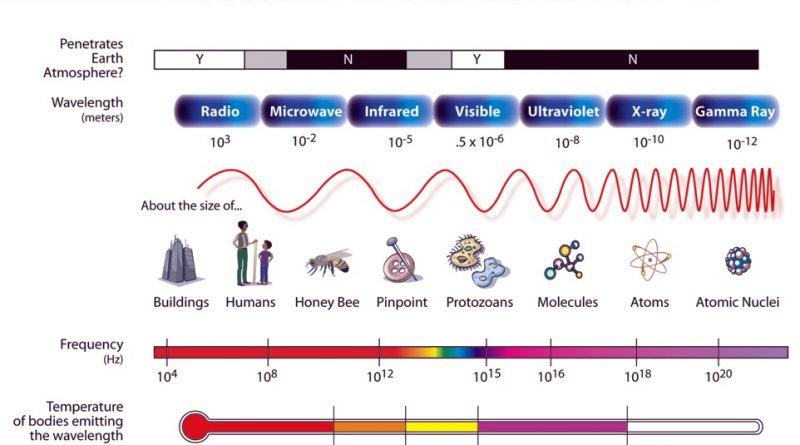New York Times Sells Out To Protect 5G
So, how is this local? Recently, Bellingham became one of many cities to form a “Stop 5G Bellingham” group and setup a petition asking for the same thing. As expected, our local main stream news source, The Bellingham Herald, posted an article in support of 5G that was full of inaccuracies and as of yesterday had been removed. We’ll see if it stays that way. Why did they do this? Well, they are advertiser supported. They have to do what their advertisers tell them to do and apparently the New York Times is no exception as is seen in this very biased article. You may enjoy it while scrolling though almost constant Verizon, and other big telecom, advertisements on their page. This kind of reporting is one of the ways that we have lost our democracy. So I have compiled a list of all of the things that were inaccurate. NYT is obviously protecting their advertisers.
Before I start, allow me to do what the NYT writer William J.Broad did not do and tell you where I’m coming from. I have been working with technology my whole life. I remember building my first computer when I was 12. I got into Linux when I was 16 and I’ve always built crazy stuff my whole life. I especially enjoy low level hardware work, like repairing PVMs, I’ve written video games, I have a degree in technology, and much more. I also can tack a few decades of professional experience onto all of this. So when I started to hear rumors about the dangers associated with non-ionizing radiation, like you see in cell phones, microwaves, and other electronic devices, I was at first skeptical.
However, my work on public broadband in my town also led me to doing extensive research into how non-ionizing radiation affects us. The rest of my justifications are below, but after years of research, I found a group of professionals, including technicians, engineers, health professionals, and much more with legit questions about this emerging tech that are simply not being answered. In fact, many of their governments are forcing this new technology on their citizens. When I tried to talk to our local County Planning Commission about it, County Council, and City Councils about this, they avoided the topic. The city even referred the public to Verizon directly to answer all of their questions as seen here. We’ve tried to talk to our local government repeatedly about this important health issue, but they simply will not have real discussions about the impact of technology in our community. We have exhausted our local governmental resources.
So here is my point by point commentary on the NYT article.
So the first clue to people here that this New York Times (NYT) article is the voice of Verizon, big telecom in general, and cell phone manufacturers, is that while you’re reading the article you are constantly seeing Verizon advertisements, Samsung, etc. This is a classic move by corporate media.
The biggest problem is that conversations are not taking place between both sides and that no reasonable compromises are being reached. 5G is being forced onto the population, whether they want it or not and there are so many alternatives to it that there is simply no good reason for the government to force it onto people.
0. The Article is Titled “Your 5G Phone Won’t Hurt You” when even your phone’s owners’ manual will tell you otherwise. How can the NYT make this claim? Did they not read their owners’ manuals? Since the FCC does not allow the installation of 5G equipment to be halted due to health claims, I’m sure allowing manufacturers to not list the health effects of their phones in their manuals is coming soon too.
1. No you don’t need 5G for the IOT. This is covered in the book “The 5G Myth” by William Webb. You need fiber, MESH networks between devices like cars, etc. They don’t need, and most don’t use, 5G to work. An updated version of this book appeared for a few weeks and then oddly disappeared earlier this year.
2. The NYT doesn’t list which US intelligence agencies they’re referring to that made the 2016 election link with RT because it’s pure speculation.
3. Yes, WIRED, Scientific American, and hundreds of other legit sources have identified 5G, and wireless in general, as a health risk that deserves more research. These are legit peer-reviewed sources. The title of the WIRED article is “5G Smartphones Cause Cancer; Big Wireless Doesn’t Want You To Know.” Are we supposed to believe that one NYT writer, and the 3 scientists he mentions, know more than legions of tech gurus at peer-reviewed publications like WIRED, Scientific American and more?
4. If RT is the cat’s paw of Russia, then whose bidding is the NYT doing? Is it the bidding of the FCC or Verizon? Looks that way. Just look at the tone of this piece. It accuses anyone that has legit concerns about 5G of being a Russian collaborator.
5. Yes, we do need to look forward.That’s why we need publicly-owned fiber-optic networks, as is outlined in “Fiber” by Susan Crawford. Even wireless networks need it and only a fool believes that 5G will solve all of our connectivity issues. Fiber is the backbone of modern society. Cheap, accessible, public fiber will ensure competition and close the digital divide.
6. 5G will make the digital divide worse. History shows us that big telecoms steal the money they are given for rural development. They simply don’t care about rural areas. Which is why many rural areas have built their own fiber networks. https://nationaleconomicseditorial.com/2017/11/27/americans-fiber-optic-internet/
7. Yes, a lack of public fiber-optics is economic warfare against the poor William. Oh wait, The New York Times is claiming it’s a lack of crappy, unreliable wireless solutions. Do they do any research?
Nielsen’s law of internet bandwidth shows us that our need for bandwidth goes up about 50% a year. We see this in the digital divide all of the time. The poor are mobile-only connected or on very low-bandwidth wired connections. Usually, they can’t afford both. The rich get reliable wired connections and mobile connections that are both respectively great along with excellent gear. Without a lot of fiber going into backup everything, the need for bandwidth will outpace any wireless connection.
8. Almost all developed countries have a lower SAR than the US does. (aka the amount of radiation they allow their citizens to absorb). Even China. Canada is 1/4 what the US is. Our levels are dangerously high.
9. Remember, China makes most of the cell phones and is rolling out public-fiber!!! We’ve already lost the pretend “race” with them by selling out our workers decades ago. We can’t meet our needs because of a lack of public resources, and an over-reliance on overpriced telecoms that charge the highest rates for broadband in the developed world. Other countries also have land use policies, preventing the installation of emitters by K-12 schools and more. Our goal shouldn’t be are we winning against China or Russia anyway. It should be, what quality of connection do our poorest citizens have access to?
10. William seems annoyed that there is more news coverage of 5G health risks lately. We will see more news coverage of 5G as corporations cut down trees, hang them by schools, etc. How will this reporter react as more news comes forward? Will he accuse everyone that doesn’t agree with him of being crazy?
11. Yes, children and the elderly (having generally lower bone density and muscle mass) are more affected by radiation. And yes, wireless is radiation. It’s non-ionizing radiation, but the American Cancer Institute reports that they believe this probably causes cancer too. The case that more research is needed is clear. https://www.cancer.org/cancer/cancer-causes/radiation-exposure/radiofrequency-radiation.html
Please see the image above for a brief overview of what waves are used with which technology. Notice how the Earth does not expose us to 5G waves naturally. They are stripped out by the magnetic field long before they get to us.
The health effects of wireless are broad, they don’t just cause cancer in rats (an animal that we share 99% of or DNA with) it effects hormones, causes headaches, and more.
12. The reporter claims that the way RT distributes its media must cause them to have some bias as well. The way RT distributes its media has nothing to do with this. RT’s content is viewable on smartphones too. They would benefit from more smartphone users watching their programs.
13. This administration has negative credibility. So do all of their organizations linking any news source to anything. A Trump advisor could tell you that the sky was blue, and you’d have to double check.
14. The reporter seems to show little understanding of basic physics. He claims the waves are safer and lower powered. However, The Shanon-Hartley Equation tells us that if you want to send more data via wireless signals you need more power. This is true of all wireless systems. The bigger problem was always a lack of symmetrical data transfers, not spectrum. Yes, the small cells use less power, but they are very close to you and they are still backed up by micro and macro towers. So there is a lot more cumulative radiation with 5G.
Yes, radio waves can interfere with each other, and 5G waves should interfere with each other less, but ultimately users will share the bandwidth of the same devices. So a bigger issue is in how we license spectrum. Or rather how the FCC allowed an AT&T/Verizon duopoly to be created during the Clinton administration. That’s right, no matter who your carrier is, part of the reason your rates are so bad is because AT&T/Verizon resell most of the 2G through 4G spectrum, if bidding goes their way again in the near future it’ll be most of the 5G spectrum too, instead of the FCC.
Yes, the waves are short and UNRELIABLE, that’s why they need the small cells. Just the complexity of the system should show you how over-hyped it is. A better licensing of spectrum, combined with solutions like internet calling, would eliminate the need for 5G spectrum, cost less, and be more reliable. For example, the Safety-Network, FirstNet works on a reserved 700 MHz bandwidth well below the 5G spectrum because when it comes to safety you want bigger waves, Microsoft is developing TV Whitespace tech. If 5G is so necessary and great then why do actual rural and safety systems use lower frequencies? It’s because they’re better and need fewer devices to be reliable. The carrier wave is actually a very small part of performance.
15. William says that lots of scientists have carefully looked at health risks. Like in the days of lead in gas or big tobacco, there are probably scientists who will support 5G. This tech wasn’t supposed to come out until 2022. So, since it’s being rushed to market, we know that enough research hasn’t been done. They only name a few scientists here anyway.
16. William references Professor Ziskin from Temple University. Philly’s close, inappropriate, relationship with big telecom is in “Captive Audience” by Susan Crawford.
17. William says that experts have dispelled Doctor Carpenter’s concerns, then only name two doctors, Bishop and Grimes, both of Oxford. It might as well be one source.
18. Still the most amazing part of the article is when they claim that 5G will heal wounds, just like how big tobacco used to convince doctors to prescribe cigarettes. Well they’re using the same kind of researchers, so from their standpoint, why not?
19. Yes William, it’s information warfare. The American people are being fed false hope about a technology that will never meet their long-term needs and probably hurt them by the NEW YORK TIMES! We need public fiber-optics!
20. William also totally blows off other concerns surrounding 5G, and how it effects our Ecology. Like how weather forecasters are saying that it may make it impossible for them to predict the weather correctly.
There are also legit concerns about the effects of wireless on other living creatures. Like the ones that pollinate our food. We know, for example, that migrating birds do use the Earth’s magnetic field to navigate and that bats communicate well above the human hearing range.
The good news is that you can all save a boat load of money by not subscribing to the New York Times in the future, or buying 5G cell phones.



